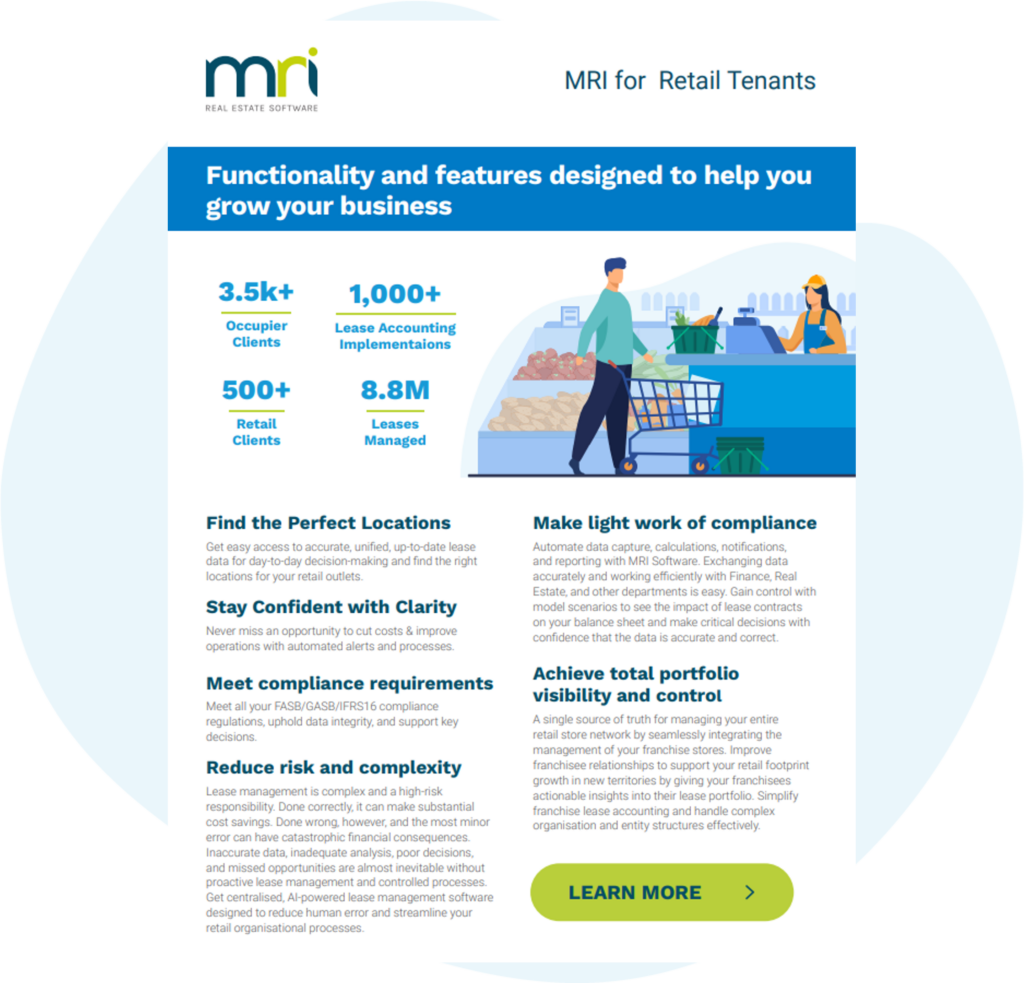What is IFRS 16?
How can software assist with IFRS 16 compliance?
If you’re in finance and accounting, you might have come across the term IFRS 16 but may need a clearer understanding of what it entails. This blog is designed to educate and clarify the concept of IFRS 16 and its impact on organisations. Whether you are a seasoned finance professional or just starting in the industry, this guide will provide valuable insights and information on IFRS 16.
In recent years, the accounting world has undergone a significant change with the introduction of IFRS 16, which has led organisations to take a closer look at their leasing activities and ensure they are on top of their compliance requirements. This blog will delve into the basics of IFRS 16 and how it affects organisations.
What is IFRS 16, and why is it important?
IFRS 16 is an accounting standard that was issued by the International Accounting Standards Board (IASB) in 2016. The standard was developed due to the growing significance of leasing activities in the global economy and the need for a consistent approach to recognising, measuring, and disclosing leases in financial statements. The previous leasing standard, IAS 17, needed to be revised to address the complexities of leasing arrangements, particularly with the increasing use of operating leases. As a result, the IASB undertook a comprehensive review of the accounting treatment of leases and developed IFRS 16 as a solution to provide more transparency and comparability in the reporting of lease transactions.
The introduction of IFRS 16 marked a major change in how organisations account for leases and has a far-reaching impact on financial statements and the calculation of key metrics such as EBITDA, Debt levels and financial covenants. IFRS 16 requires organisations to recognise a lease liability and a right-of-use asset for all leases, except for short-term and low-value leases, in their balance sheets. This represents a significant departure from the previous standard and requires organisations to reassess their leasing arrangements and ensure they comply with the new standard.
Common IFRS 16 pain points
IFRS 16 compliance can present several challenges for organisations, including:
- The complexity of lease contracts: Leasing arrangements can be complex and can vary widely from one organisation to another. This can make it difficult for organisations to accurately identify and classify leases following IFRS 16 requirements.
- Data management: Organisations must gather and maintain accurate data on all their leases to meet IFRS 16 compliance. This can be a time-consuming and resource-intensive process, particularly for organisations with a large number of leases.
- Systems and processes: Organisations must have systems and processes in place to support the recognition, measurement, and disclosure of leases per IFRS 16 requirements. This may require significant changes to existing processes and systems, which can be costly and time-consuming.
- Cost of compliance: Meeting IFRS 16 compliance requires significant effort, including updating processes and systems, collecting and managing data, and retraining staff. Organisations must be prepared to invest time and resources into ensuring compliance with the standard.
- Transition and implementation: Organisations must carefully plan and execute the transition to IFRS 16 compliance, which can be complex and may require significant time and effort. This can include changes to systems and processes, data collection and management, and staff training.
Overall, managing IFRS 16 compliance can be a complex and challenging process, requiring significant effort and resources. However, with the right support and planning, organisations can successfully navigate the transition to IFRS 16 compliance and benefit from increased transparency and comparability in their financial statements.

How to stay on top of IFRS 16
One of the key ways organisations can address the challenges of IFRS 16 compliance is by ditching manual spreadsheet-based processes and turning to specialised software solutions. Here are some of the ways software can help combat the pain points of IFRS 16:
- Improved accuracy and efficiency: Software solutions can automate many of the manual processes involved in collecting, managing, and analysing lease data. This reduces the risk of errors and increases efficiency, allowing organisations to meet IFRS 16 compliance more easily and accurately.
- Streamlined data management: Software solutions can centralise lease data and provide a single source of truth for all lease information. This makes it easier for organisations to manage their lease data, track changes, and ensure compliance with IFRS 16 requirements.
- Reduced time and cost: By automating manual processes and streamlining data management, software solutions can significantly reduce the time and cost involved in meeting IFRS 16 compliance. Organisations can save time and resources that can be redirected toward other important tasks.
- Improved reporting and visibility: Software solutions can provide real-time reporting and analysis of lease data, making it easier for organisations to track their progress on compliance and make informed decisions.
- Expert support and guidance: Many software solutions come with expert support and guidance, which can help organisations navigate the complexities of IFRS 16 compliance and ensure they are fully prepared for the transition.
Want to learn more?
If you’re struggling with IFRS 16 in your role or organisation, MRI Software can enable you to comply with your leasing compliance requirements with our robust IFRS 16 software.
Get in touch with us today to get a tailored and bespoke consultation by one of our helpful team members, reduce the time you spend on clunky spreadsheets, and welcome simple software that enables you to tackle other tasks in your workday.
MRI for Retail Tenants
Functionality and features designed to help you grow your business 3.5k+ Occupier Clients 1,000+ Lease Accounting Implementations 500+ Retail Clients 8.8M Leases Managed Download our brochure to learn more.
